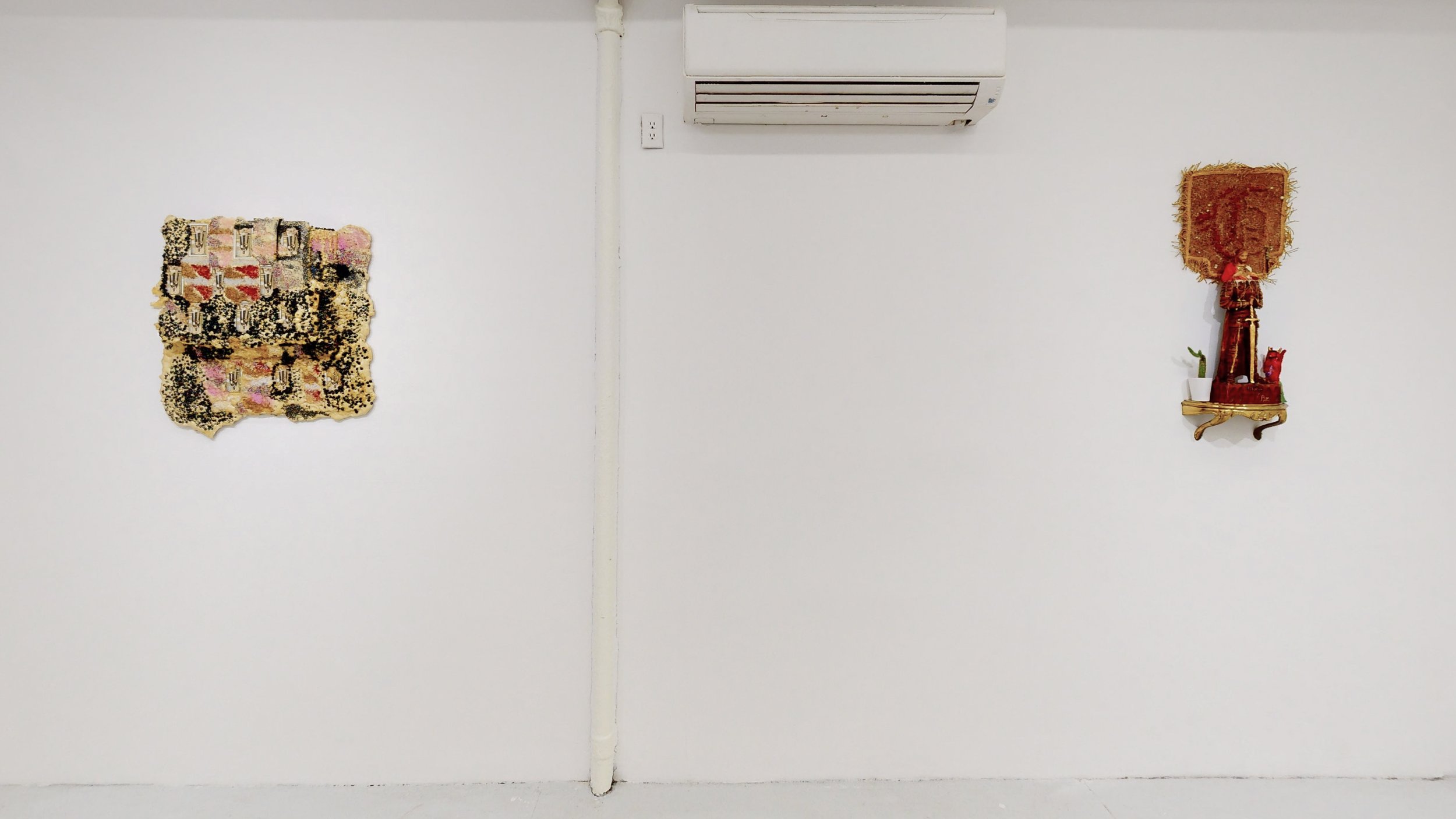Haciendo Caras
Haciendo Caras, an essay by Alex Santana
Luis A. Sahagun’s works mine personal mythologies to underscore how the historical violences of religion and colonial conquest appear in our own lives, as well as those of our family and extended communities. In multimedia works that drip accumulatively, protrude from the surface, and juxtapose unlikely elements, Sahagun evokes the colloquial items that inform the ideologies imposed on us. The continual reappearance of stretched, distorted faces in his work further suggests how these imposed social orders manifest as psychological distresses, bordering the realm of hallucination.
Works like En Luto Por Un Divino Socorro and Peticion Para San Ignacio de Loyola employ a strategy of material accumulation, which provides the work with a formidable sense of physical and emotional density. Through embedded ornate beading and the gathering of plastic rosaries, both works address the accumulative brutality of colonial hegemony, specifically its enforcement through Catholicism. Illustrations of San Ignacio de Loyola and San Martin de Porres cement this criticism through allusions to two saints who represent vastly different principles: the former of a Spanish Jesuit order, and the latter (turned upside down), the Peruvian patron saint of mixed peoples and racial harmony. Another sculptural work titled Gloria y Paz makes a similar point through the use of Jesus Christ, whose figure is fused with that of a colonizer wielding a sword, alluding to the bloody conquest of the Americas justified in the name of the cross.
The inclusion of found objects in Gloria y Paz frames the main protagonist with poignant symbols, including a halo made of sawdust, a spiked cactus, and a horned devil figurine. In this work and others, the amalgamation and clashing of diverse sculptural materials and found objects evokes the idea of construction. Specifically, the construction of ideology, but also the profound potential of physical construction sites and work zones, which thematically reappears in Sahagun’s practice. In Maria Bonita, Maria Del Alma this is apparent, most obviously through the use of oriented strand board as the background for the painted portrait of the artist’s mother. In this monumental work, the main figure is stately and elegant, like a saint who has been recently beatified. The combination of colloquial construction materials with ornate bead work and other delicate ornamentation lends a personalized quality to the tender portrait, and the love is unmistakable.
Love––like chaos and faith and other turbulences––is an emotional vehicle for the exploration of personal histories as well as broader societal systems and symbols. Bringing to play a more restrained color palette, in works like Magia Madre and Ojo Celestial Sahagun explores the emotional intensity of conflicting ideologies through surrealist disembodiment. In both works, human faces are stretched and distorted, limbs are severed, and heads are left floating in space. A sense of foreboding permeates these works, as human faces hover above chaotic oceans and alien landscapes, attempting to make sense of the world(s) they inhabit. These works, among others in Haciendo Caras, illustrate the profound tension between love and conflict, ultimately underscoring their coexistence on the same plane: messy, beautiful, and human.











